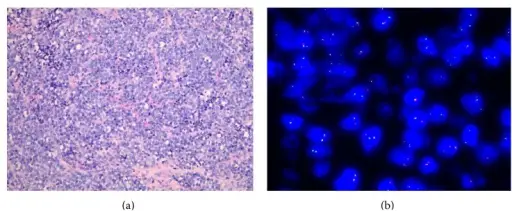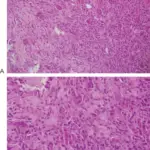Ewing sarcoma is a malignant, distinctive small round cell sarcoma associated with a t(11:22) translocation and most commonly occurs in the diaphysis of long bones.
What is the Pathology of Ewing Sarcoma?
The pathology of Ewing sarcoma is:
-Etiology: The cause of Ewing sarcoma is not exactly known.
-Genes involved: EWSR1-FLI1 fusion.
-Pathogenesis: The sequence of events that lead to Ewing sarcoma is due to t(11:22) translocation which leads to the formation of a fusion protein (EWS-FLI1).
-Histology: The histology associated with Ewing sarcoma shows small round cells with an increased nuclear-cytoplasmic ratio that represents a family of small round blue cell tumors.
How does Ewing Sarcoma Present?
Patients with Ewing sarcoma typically affect males more than females in less than 20 years of age. The symptoms, features, and clinical findings associated with Ewing sarcoma include intermittent fevers, anemia, leukocytosis, increased sedimentation rate, and other symptoms of inflammatory systemic illness.
How is Ewing Sarcoma Diagnosed?
Ewing sarcoma is diagnosed by integration of clinical, radiographic, immunohistochemical, and molecular information.
How is Ewing Sarcoma Treated?
Ewing sarcoma is treated by multidrug chemotherapy such as vincristine, cyclophosphamide, doxorubicin, etoposide, or ifosfamide.
What is the Prognosis of Ewing Sarcoma?
The prognosis of Ewing sarcoma is fair.



